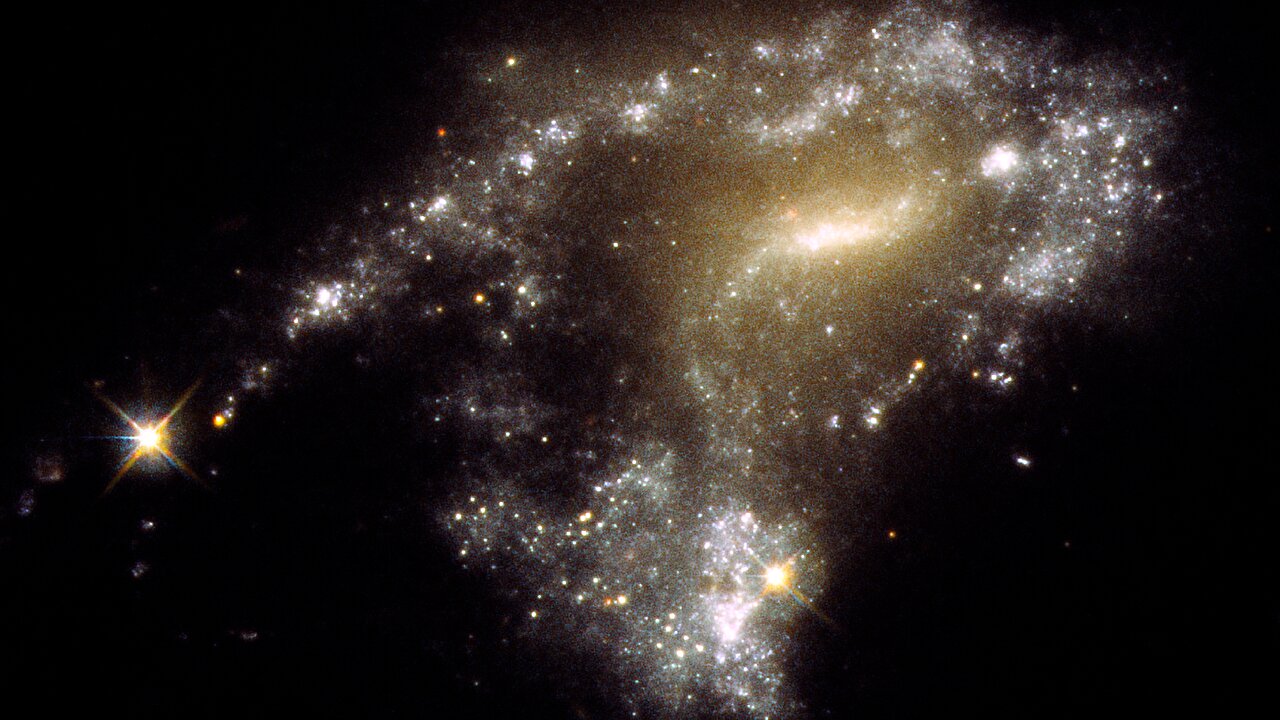When extraordinary cosmic events like galaxy collisions happen, it triggers the formation of new stars and potentially new planets that would not have existed otherwise. The gravitational pull that causes these collisions between galaxies creates tidal tails—long, thin regions of stars and interstellar gas.
NASA’s Hubble Space Telescope has focused on 12 interacting galaxies with long, tadpole-like tidal tails of gas, dust, and numerous stars. Hubble’s exceptional sharpness and sensitivity to ultraviolet light have revealed 425 clusters of newborn stars along these tails, resembling strings of holiday lights.
Each cluster contains up to 1 million blue, newborn stars.
Clusters in tidal tails have been observed for many years. When galaxies interact, gravitational tidal forces pull out long streamers of gas and dust. Two well-known examples are the Antennae and Mice galaxies with their long, narrow, finger-like projections.
In a recently published study in Monthly Notices of the Royal Astronomical Society, astronomers used the near-infrared capabilities of NASA’s Hubble Space Telescope to study tidal tail clusters and determine their ages and masses, as well as properties of the merging galaxies.
2024-02-10 10:00:04
Source from phys.org
